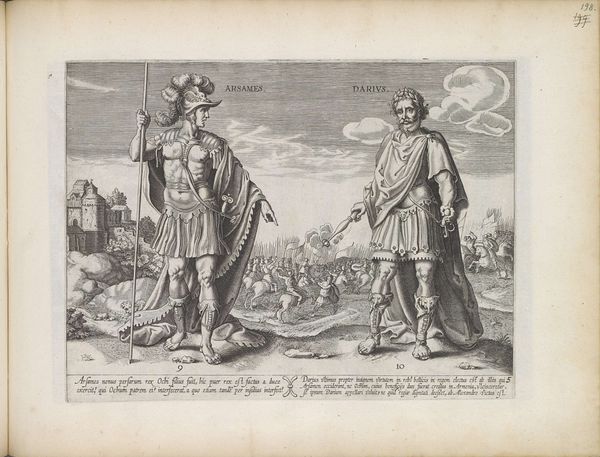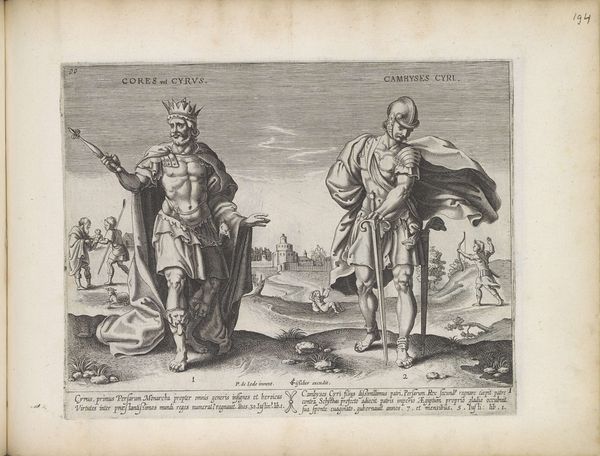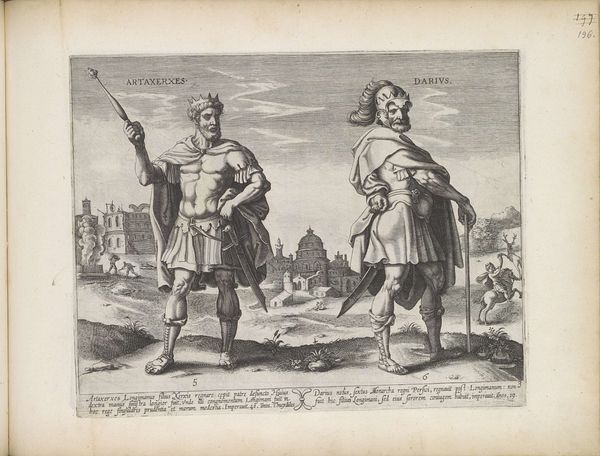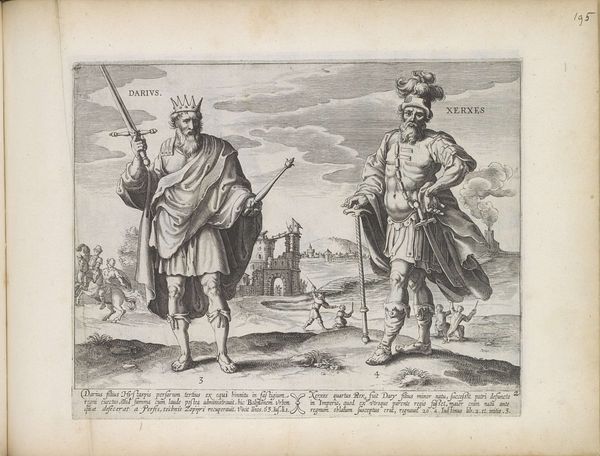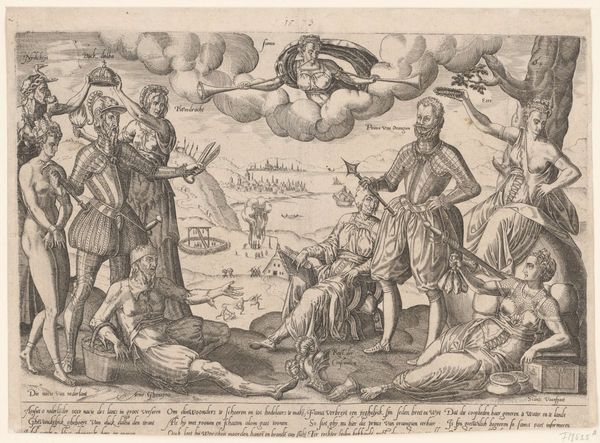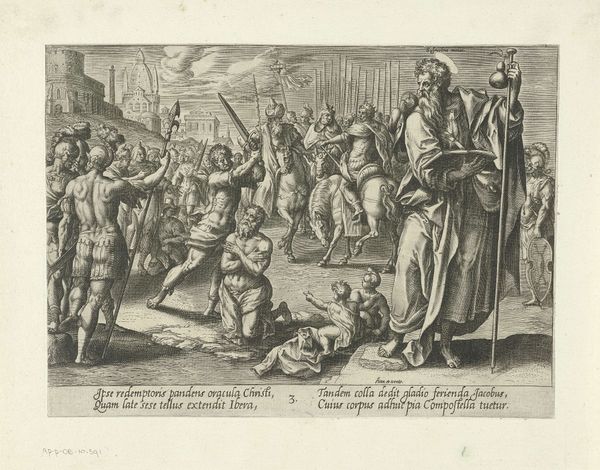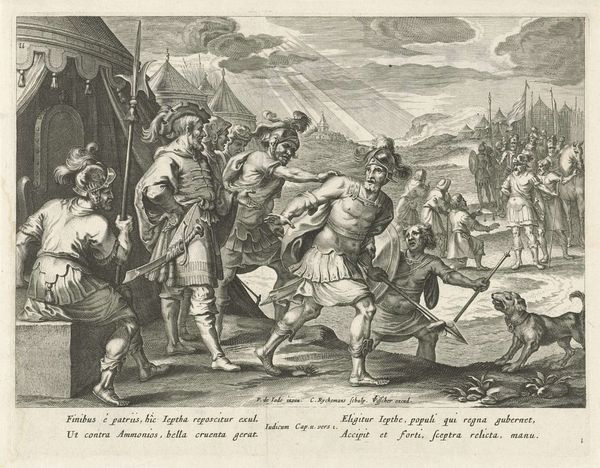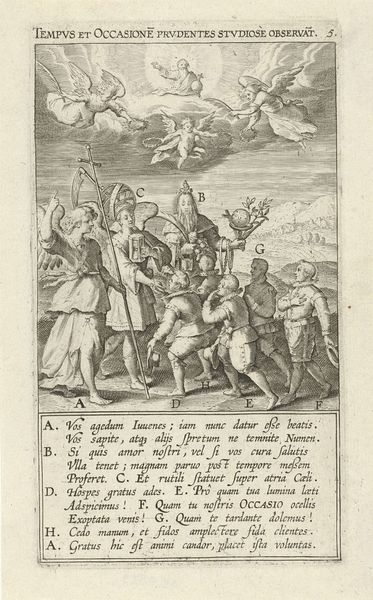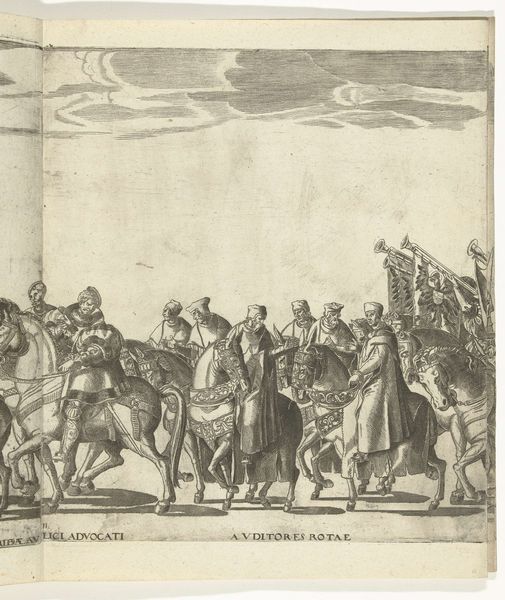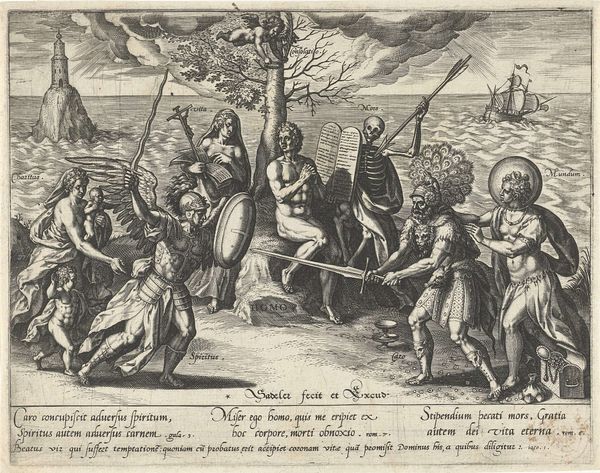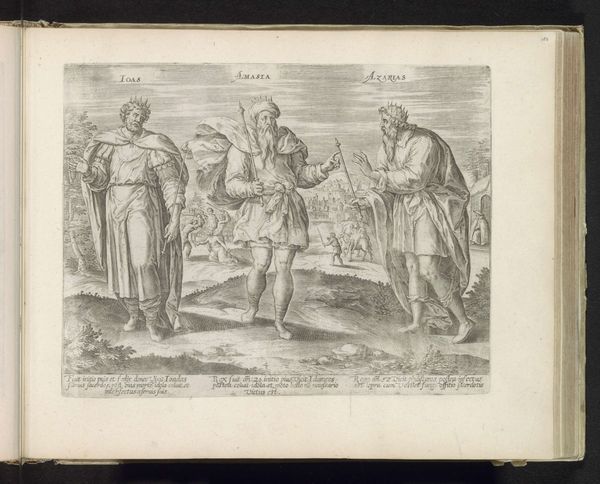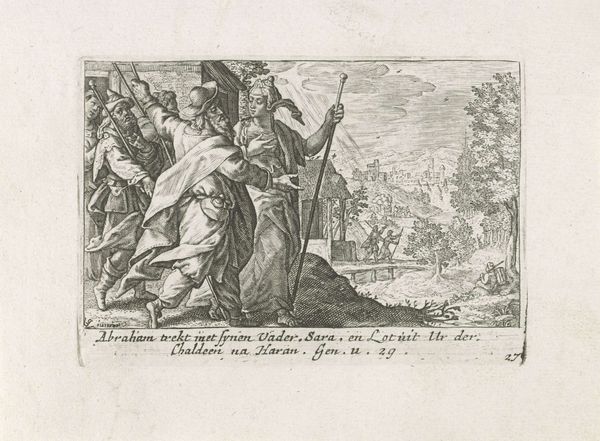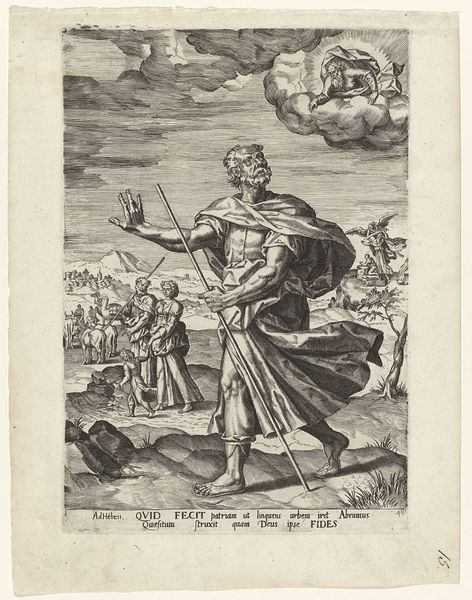
print, engraving
#
baroque
# print
#
old engraving style
#
figuration
#
history-painting
#
engraving
Dimensions: height 214 mm, width 269 mm
Copyright: Rijks Museum: Open Domain
Curator: Before us we have an engraving, likely a print from a book, dating back to 1643. The title is "Koning Artaxerxes II en koning Artaxerxes III," which translates to "King Artaxerxes II and King Artaxerxes III.” The artwork is held at the Rijksmuseum. Editor: Well, immediately the starkness of the lines and the composition strike me. There's a sort of forceful symmetry in the poses of these two figures. Curator: That symmetry is intentional, I believe, reflecting the visual language prevalent in Baroque representations of power and lineage. It would serve the purposes of legitimizing their roles through visual association. Editor: Observe the way the engraver uses cross-hatching to build volume, particularly in the figures' robes. The treatment of light and shadow is quite pronounced. Note also the compositional tension with the crowd scenes contrasted by open areas near the bottom, creating movement around the static poses of the rulers. Curator: Right. The historical context is vital here. Artaxerxes II and III ruled the Achaemenid Empire at critical junctures. Images like these circulated widely, shaping the perception and reception of historical rulers, often framing them within a moral or political argument for leadership. We must consider the possible uses of prints as both decorative items and important vehicles of communication in the early modern period. Editor: The composition certainly draws the eye to the details. I’m drawn to how the linear nature emphasizes clarity and strength, especially as the technique is translated via simple line work and tonal juxtapositions. Curator: Exactly. These printed images acted as visual records. They served a function. Editor: A very powerful example. Looking closer makes one appreciate both its artistic details and also how socio-political forces shape art’s purposes and presentation, especially how even a small, reproduced work may be so forceful. Curator: I agree; paying attention to its structural clarity and artistic details deepens our grasp. The composition also reveals how visual languages endure in shaping perceptions.
Comments
No comments
Be the first to comment and join the conversation on the ultimate creative platform.
